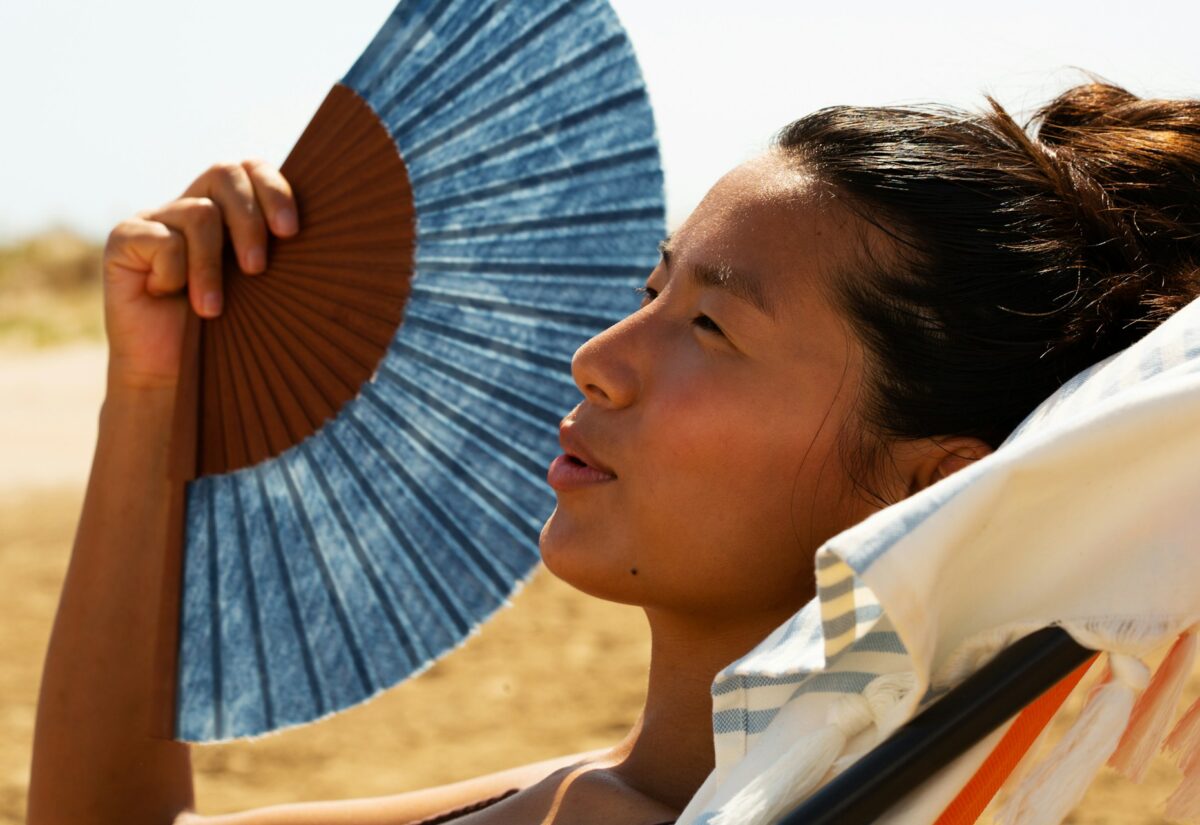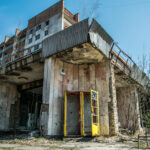 Unsplash/Leandro Crespi
Unsplash/Leandro CrespiBefore air conditioning became a standard feature of modern life, people had to get creative to survive the heat—especially during the height of summer. Across centuries and cultures, humans devised all sorts of inventive, resourceful, and sometimes downright strange ways to keep themselves from overheating. Whether through ingenious architecture, clever use of local materials, or sheer adaptation to their environment, people found ways to manage sweltering temperatures long before the hum of an electric unit became the soundtrack of summer. Here are some of the more unusual and surprisingly effective historical methods people used to beat the heat before air con came along.
Building thick walls and high ceilings
It may not seem remarkable today, but past civilisations were experts at designing their buildings to combat the heat without relying on any external power. In hot regions like the Mediterranean, the Middle East, and parts of North Africa, buildings were constructed using thick stone or mud-brick walls. These materials had high thermal mass, meaning they absorbed heat during the day and released it slowly at night, helping to regulate indoor temperatures naturally.
High ceilings were another clever feature, allowing hot air to rise above the living space, creating a cooler zone below. Houses were often built around central courtyards, which promoted airflow and created shaded outdoor areas that stayed comfortable even during peak temperatures. Narrow alleyways between homes helped funnel breezes through densely packed towns, creating a sort of natural ventilation system. It’s no coincidence that many of these architectural principles are seeing a resurgence today in sustainable building design.
Sleeping on the roof
In places like ancient Persia, Egypt, and parts of southern Europe, it was common for people to sleep on the rooftops of their homes during the summer months. The architecture often included flat roofs specifically designed for this purpose. After a blazing hot day, the roof would cool rapidly once the sun set, making it one of the most comfortable places to sleep. People would bring out bedding, cots, or even light mattresses, sometimes making entire evening rituals of stargazing and storytelling under the open sky.
This practice wasn’t just about comfort—it also helped reduce the risk of heatstroke or disrupted sleep, which could have real consequences in societies without modern medicine. In some communities, neighbours would all sleep on nearby rooftops, creating elevated social gatherings that continued well into the night.
Using wet sheets and curtains
Before fans or air conditioning, wet sheets served as a clever and simple method for cooling down homes. Draping wet cloths over windows and doors cooled the air as it passed through, thanks to the natural evaporative process. People would also hang damp towels from wooden frames or lay wet cloths on tiled floors to cool their living spaces.
At night, it wasn’t uncommon to soak lightweight blankets or sheets in water, wring them out, and then use them as bed coverings. Combined with a steady breeze or a hand fan, this technique created a cooling effect that was surprisingly effective—even if slightly clammy. It was an early, low-tech form of evaporative cooling and could make a big difference during heatwaves.
Taking siestas and adapting the daily schedule
In many hot-weather cultures, people didn’t try to fight the heat—they simply adapted their routines around it. The midday break, or siesta, became common in countries such as Spain, Italy, and parts of Latin America and Asia. People would start work early in the morning, rest through the hottest part of the day, and resume in the late afternoon or evening when temperatures were more manageable.
Shops, businesses, and even government offices operated on split shifts, and family life revolved around this slower, more heat-conscious rhythm. Meals were pushed later into the evening, social activities came alive after dark, and homes were designed to accommodate this flexible, sun-aware lifestyle. In many ways, the siesta wasn’t just a luxury—it was a necessity.
Handheld fans and punkahs
Handheld fans have existed in countless cultures for thousands of years, often crafted from palm leaves, feathers, silk, or paper. In Asia, fans were a blend of artistry and function, decorated with intricate designs and sometimes used in formal dance or rituals. In Europe, fans became fashionable accessories, particularly for women, and were often status symbols.
Meanwhile, in colonial India and other tropical colonies, the punkah was the fan of choice—usually a large canvas sheet suspended from the ceiling and swung manually via ropes by a servant or attendant. In some public buildings and upscale homes, these punkahs were operated all day to keep the air circulating. Despite their labour-intensive nature, they were incredibly effective in providing consistent cooling over large spaces.
Cold feet (literally)
The ancient Egyptians came up with a variety of clever cooling strategies, including soaking their bedding and mats in cool water before bed. They also placed clay jars filled with chilled water near their feet while sleeping. Dipping one’s feet in water before going to bed was another popular technique, as cooling the extremities—particularly the feet and hands—could bring down overall body temperature more quickly.
Some people even kept water basins under their beds or chairs to soak their feet periodically throughout the day. This not only helped regulate body heat but provided relief from the fatigue and swelling often associated with excessive heat.
Wearing natural layers and light colours
It may seem counterintuitive, but covering up with the right kind of clothing was often the key to staying cool in scorching climates. Loose-fitting robes, long tunics, and head coverings made from breathable fabrics like cotton, linen, or muslin were staples in desert and tropical regions. These garments protected the skin from direct sunlight while allowing airflow to help with sweat evaporation.
Light colours were also essential. White or pale hues reflected sunlight rather than absorbing it, which helped reduce heat retention. Rather than exposing more skin, people in hot climates learned to use fabric as a barrier—keeping them cooler and protecting against sunburn and dehydration.
Underground chambers and windcatchers
One of the most sophisticated pre-modern cooling systems came from Iran, where windcatchers (badgirs) were used to funnel cooler breezes down into buildings. These tall, chimney-like structures caught upper-level winds and directed them into the house, often over underground water channels or pools that helped cool the air even further before it circulated through the rooms.
Some homes and public buildings were built with basements or subterranean chambers, known as qanats, which remained naturally cool throughout the day. These spaces were used for storage, sleeping, or simply retreating during the hottest hours. Together, these passive cooling techniques created astonishingly comfortable interiors in even the harshest climates.
Ice harvesting and cooling pits
In regions where winters were cold enough, ice was harvested during the cold months and stored in underground ice houses or insulated pits packed with straw and sawdust. This ice could be used for months into the summer to chill food, cool drinks, and even bring the temperature down in rooms.
Wealthier families might have had dedicated “cool rooms” where blocks of ice were placed in metal trays or stone-lined wells to release cold air. It wasn’t just for luxury—ice delivery became a thriving industry in the 18th and 19th centuries, with ice shipped across oceans to meet demand. For those who could afford it, ice was a genuine game-changer.
Portable parasols and personal shade
Before sunscreen, hats and parasols were the go-to for sun protection and heat management. Parasols were carried by both men and women in various parts of the world, crafted from materials like silk, bamboo, and paper. In China and Japan, parasols were often beautifully painted and used in both everyday life and ceremonial settings.
In Britain, Europe, and colonial settings, parasols were essential outdoor accessories for upper-class women who wanted to maintain pale complexions—a symbol of refinement—but they also served a very practical role in blocking intense sun and reducing heat exposure during walks, carriage rides, or garden parties.



